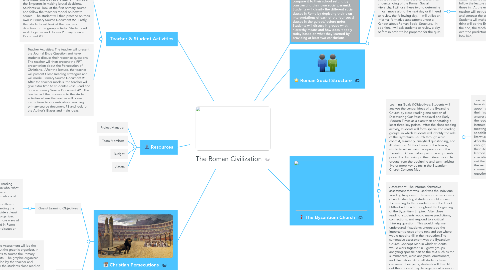
1. Teacher & Student Activities
1.1. Student Activities: The students will write a about a Journal Entry Question and will discuss the Journal Entry as a class. Students will look at the PPT presentations about the Persecutions of Christians. The Students will close read three primary source documents from the Emperor Diocletian, Trajan, and Nero. Students will analyze the content of the time frame and look at the interior motives of the Emperors in making brutal decisions. Students will look at the first primary source and follow the teachers model on how to source. The student will then practice on their own in Primary Source Document #2. Lastly, the students will look at the teachers direction for the group activity. Students will work together and discuss Primary Source Document #3.
1.2. Teacher Activities: The teacher will present the Journal Entry Question and have students discuss their response questions. The teacher will then present the PPT presentation about the Persecution of Christians. After the lecture, the teacher will present Close Reading strategies and will model Primary Source Document #1. After the teacher models, the teacher will give extra time to students Close Read and Source Primary Source Document #2. The teacher will then move on to the student activities where the teacher will present instructions to students about sourcing primary source document #3 and look for the Author's Biases and main ideas.
2. Resources
2.1. Project Manager
2.2. Team Members
2.3. Budget
2.4. Assets
3. Christian Persecutions
3.1. Goals/ Learning Objectives
3.1.1. • By participating in a close reading activity, students will identify the who, what, where, and in three primary source documents regarding the persecutions of the Christians. • Students will analyze three different Emperor’s interior motives regarding the spread of Christianity and provide at least three conclusions in a graphic organizer. • Students will list three or more ways of how Christians were persecuted in Rome and will also take part in group discussion with fellow classmates.
3.2. Assessments
3.2.1. The Formative Assessment will be the student filling out the graphic organizer, in order for students to source the Primary source documents. The graphic organizer would be modeled by the teacher and would then have the students close read on their own and to their own responses. The Summative Assessment will be students working together on the last primary source document. The students would be showing how to source documents and overall how to analytically think. The students would have to come up with conclusions and review if the text has any biases.
4. Learning Goals & Objectives: Students will define a hierarchy as they will analyze the Roman social hierarchy (Emperor, Patricians, Plebians, Slaves) and later compare it to their school setting by constructing their own social pyramid. Students will classify the different social classes in Rome by depicting their own interpretations of each of the four social classes in the guided/lecture notes. Students will discuss in groups what hierarchy means and how does it apply today based on what they learned by providing at least two conclusions.
4.1. Assessments: The terms from the lecture presentation and classifying the Roman social structure will be used to assess their understanding of the Roman Social Hierarchy. I will use these two to determine if I can move along the next day or if I need to review the following day. I will utilize an informal formative assessment under a Kahoot about Roman Social Structure. In addition, I will ask students to review a day before in order to be prepared for the quiz.
4.1.1. The teacher will use a Power-Point presentation to help students understand the role of the people in the Roman Society. Students will be using guided notes to follow the lecture and students will then fill those in. At the end of the lecture the teacher will instruct students to compare and contrast the social structure with Yorba. Students will make predictions of who they think will be the Emperor, Patrician, Etc. At the end, the teacher and the student will go over the predictions to see how Yorba would look like.
5. Roman Social Structure
6. The Byzantium Church
6.1. Learning Goals &Objectives: Students will analyze the central ideas of the Byzantine Church by close reading one section of Discovering Our Past: Medieval and Early Modern Times as a class then annotating a least three key points. After the close reading activity, students will form specialized reading groups, in which students will identify the role of the Byzantium Church through word context, summary, analytical questioning, and illustrations. At the closure of the lesson, students will explain the operations of the Byzantium Church along with the arguments posed by discussing in their Literature circle groups from the beginning and summarizing five or more key points in the Byzantium Church Concept Map.
6.1.1. Teacher and Student Does: The teacher will have students have an two scheduled appointments. Students would meet with their first appointment to close read and answer analytical questions pertaining to the reading section. The teacher will then instruct students to meet with their second meeting time as they will be working on specialized roles to help students in the literature groups understand the context. After the teacher has given everyone enough time, all students will then go to their literature groups and share what they learned from other students in the specialized groups. All students will then fill out the Byzantium Concept Map that show the section definition, key illustrations, summary, and high leveled thinking questions for the discussion.
